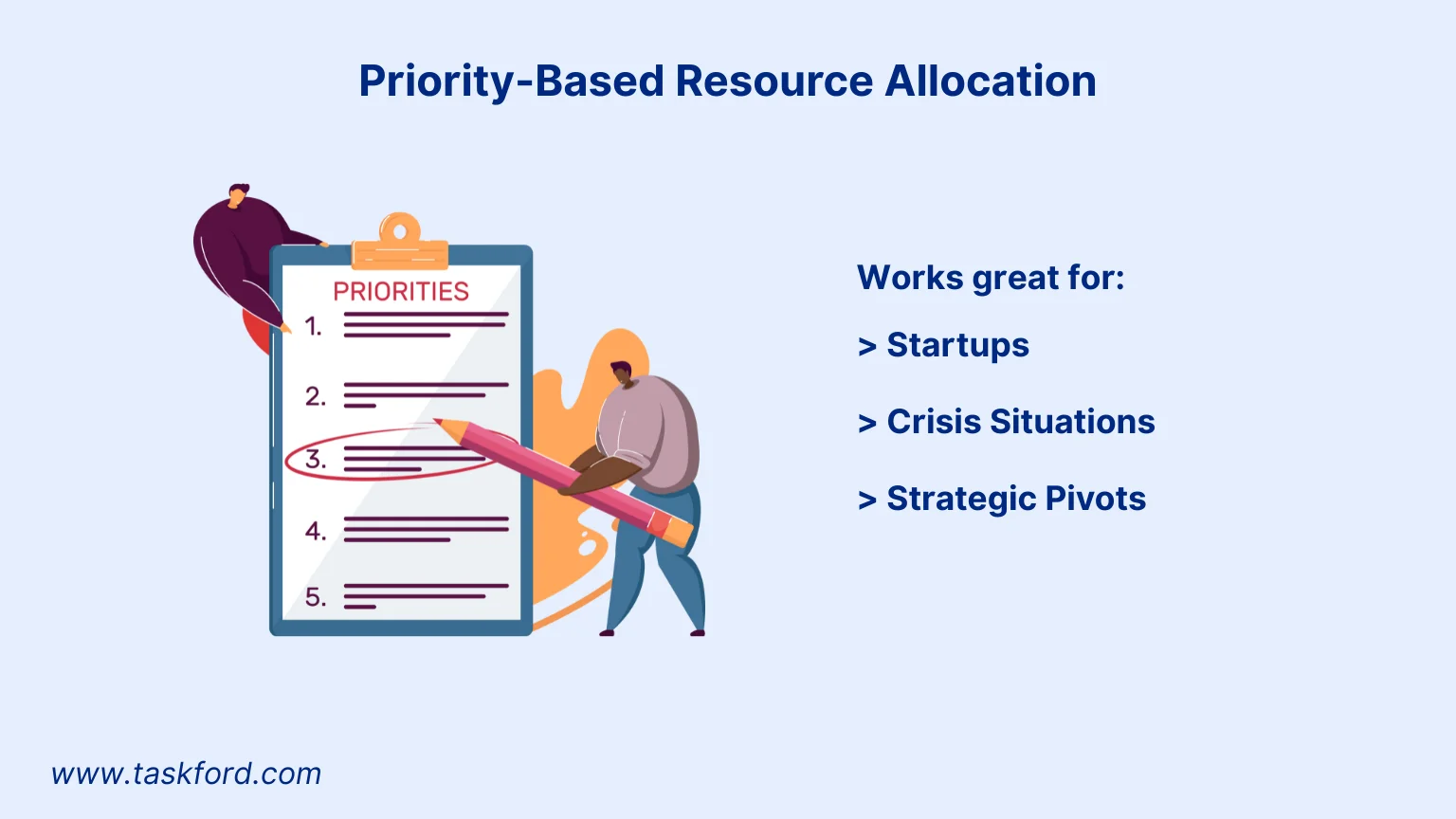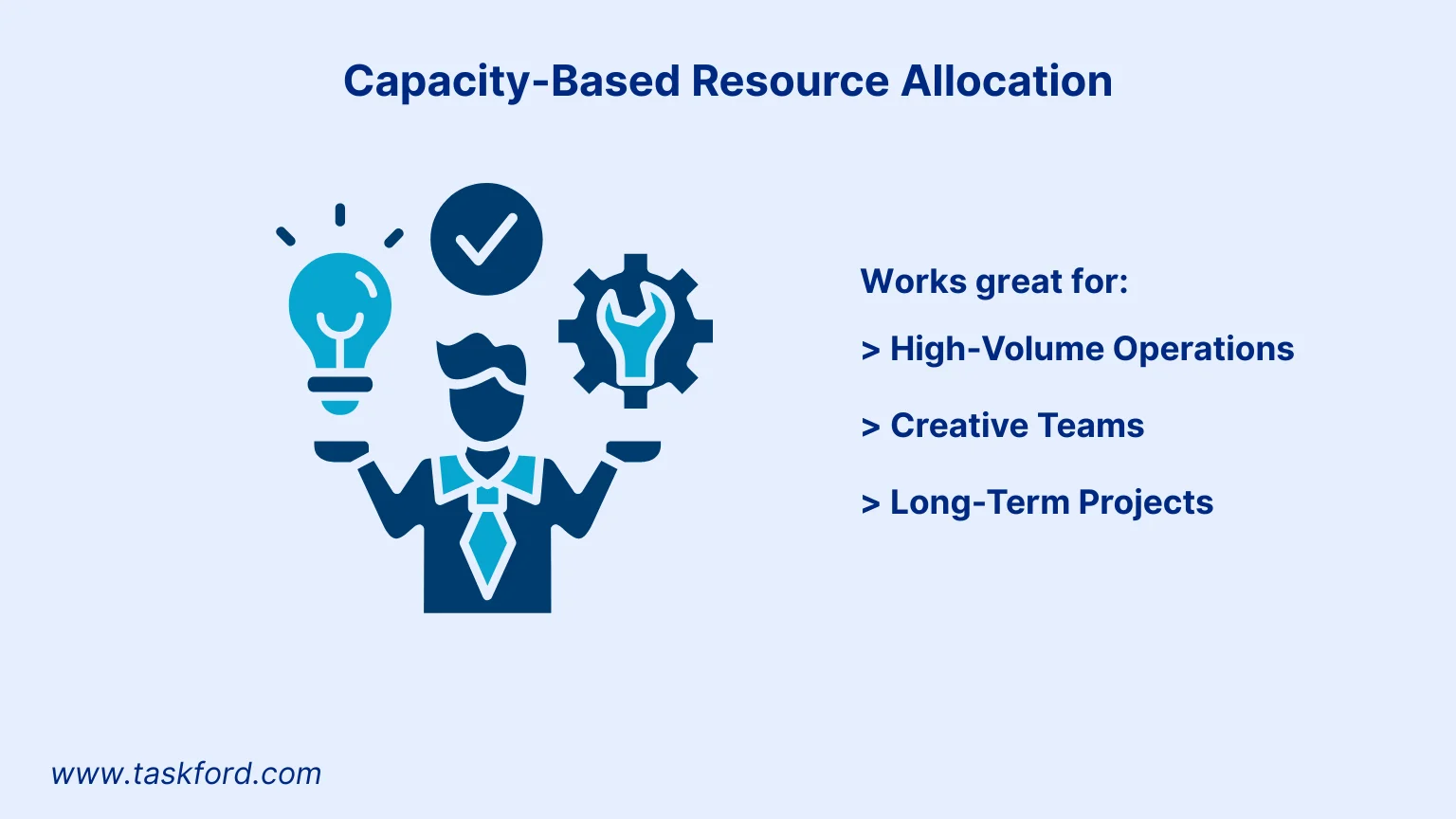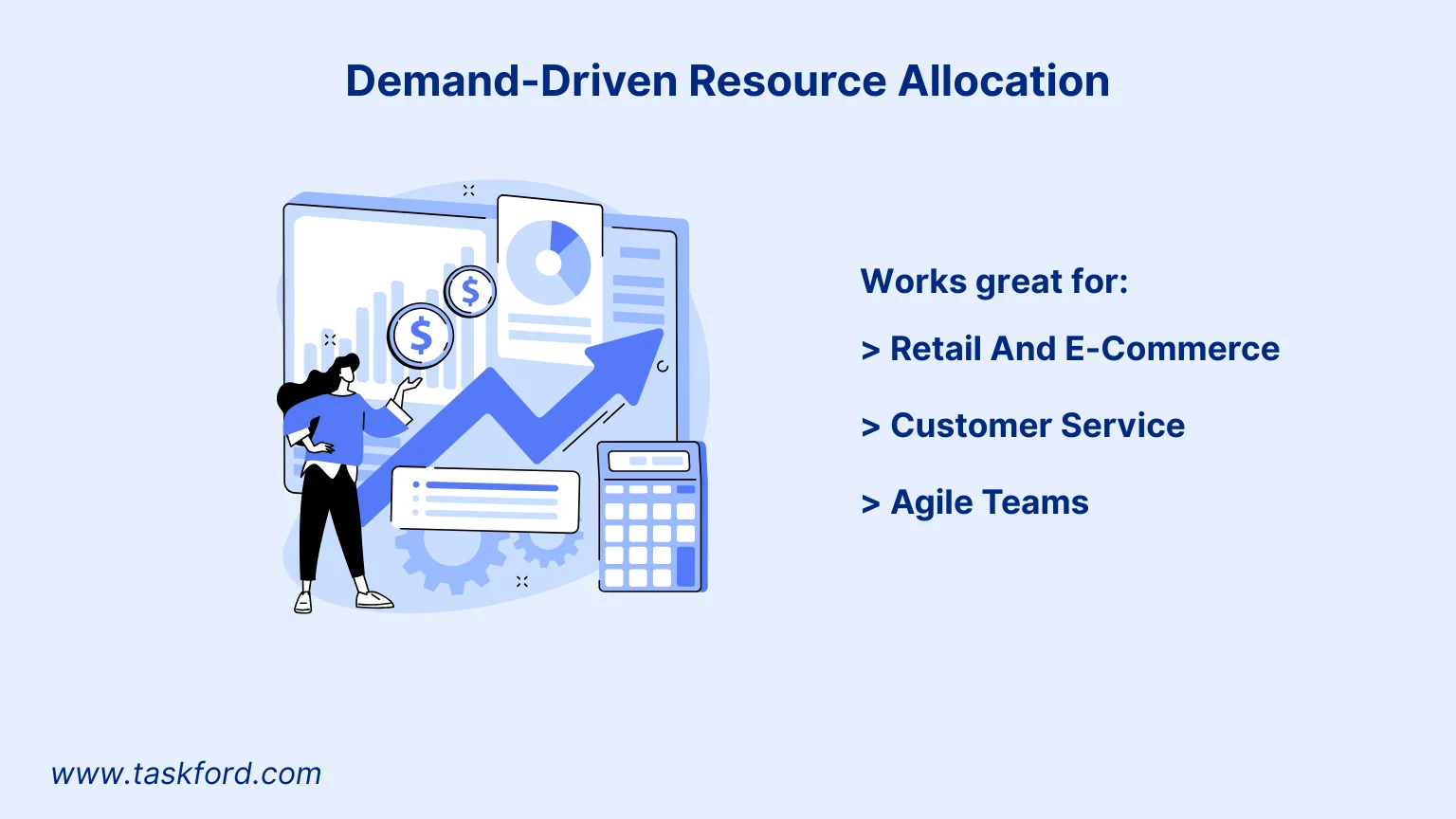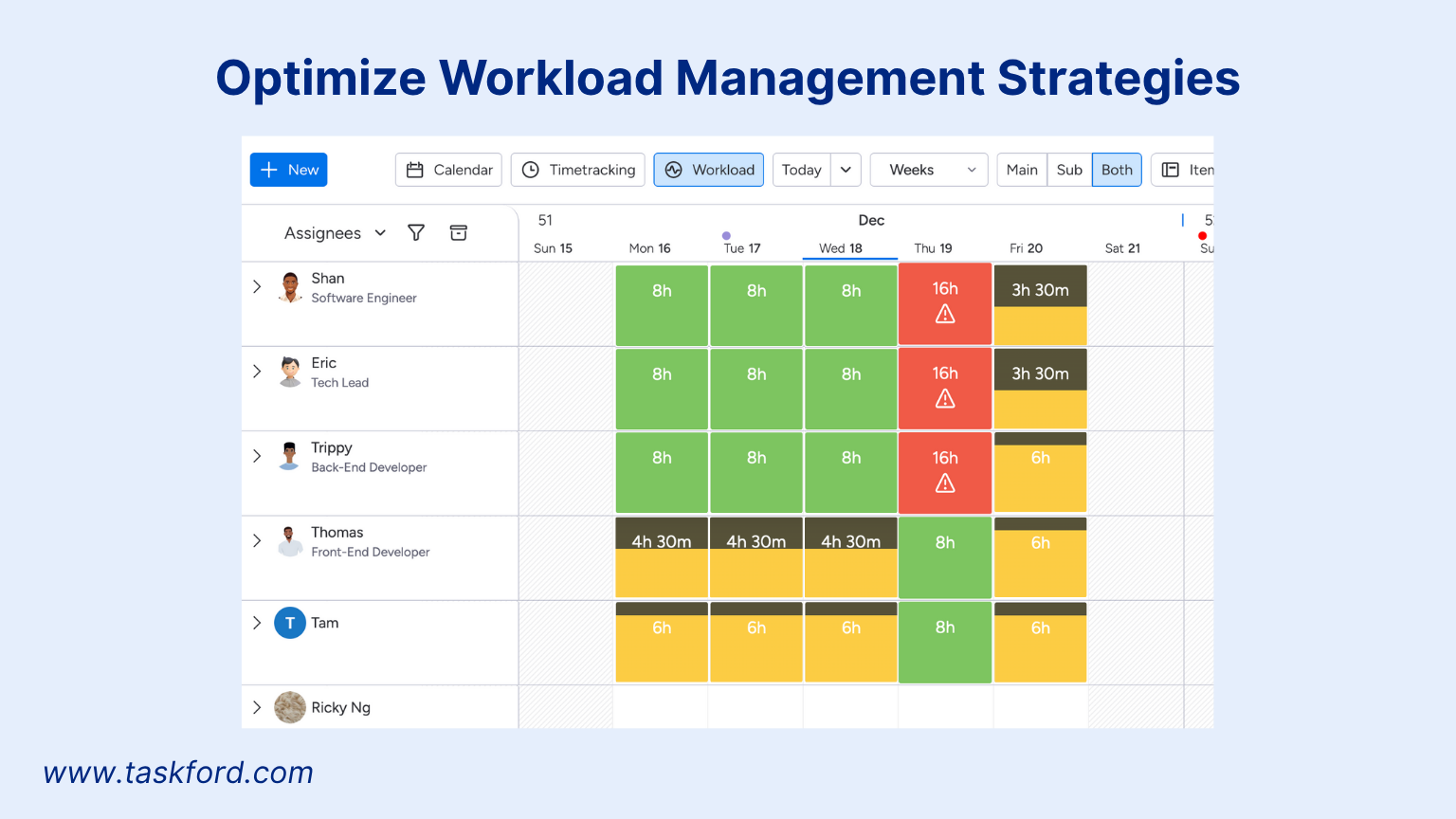What Are Three Different Ways to Allocate Resources (and When to Use Each)?
Discover three effective resource allocation methods to optimize your projects and boost efficiency in this insightful guide.
Resource allocation is the cornerstone of successful project management and business operations. It’s about deciding how to use your time, budget, people, and tools to achieve your goals efficiently. When done well, it keeps projects on schedule, controls costs, and boosts team productivity. When done poorly, it can lead to delays, overspending, or burnout. With multiple approaches to resource management, choosing the right method can feel challenging.
This blog explores three effective methods (priority-based, capacity-based, and demand-driven allocation) and explains when to use each. Let’s dive in and discover how to optimize your resource allocation strategy.
What Is Resource Allocation?
Resource allocation is the process of assigning resources (such as time, money, staff, or equipment) to tasks or projects to meet specific objectives. It involves planning, prioritizing, and tracking resource use to balance competing needs and avoid waste. Effective allocation requires identifying available resources, assessing project demands, and monitoring utilization to prevent overuse or shortages.
For a deeper understanding of the basics, including common challenges and solutions, visit our full guide on Resource Allocation
Why Resource Allocation Matters
Good resource allocation ensures projects stay on track, budgets are respected, and teams remain productive. Poor allocation can cause missed deadlines, wasted funds, or stressed employees. By choosing the right method, you can align resources with your needs, improve efficiency, and achieve better results. Let’s explore three distinct ways to allocate resources and when each works best.
Method 1: Priority-Based Resource Allocation

What It Is
Priority-based resource allocation focuses on assigning resources to the most important tasks or projects first. You rank tasks based on their value, urgency, or impact, then allocate resources (like budget or staff) to the top priorities. You can use methods such as Eisenhower Matrix to determine the priority of your work.
How It Works
-
Define criteria for “high priority.” Examples include:
- Alignment with company goals
- Urgent deadlines
- Potential for revenue or growth
- Addressing critical risks or compliance issues
-
Rank tasks or projects based on these criteria.
-
Assign resources to the highest-ranked items first.
For example, a marketing team might dedicate most of their budget to a product launch campaign rather than routine social media updates, as the launch drives more sales.
When to Use It
This method is ideal when resources are limited, and you need to focus on what matters most. It works well for:
- Startups: Small teams with tight budgets must prioritize high-impact projects to grow.
- Crisis situations: During issues like supply chain disruptions, resources go to urgent fixes.
- Strategic pivots: When shifting to a new market, resources follow the new direction.
Pros and Cons
Pros:
- Focuses on critical goals
- Aligns resources with strategy
- Clarifies team priorities
Cons:
- Requires clear ranking criteria
- May delay less urgent tasks
- Can spark stakeholder disagreements
Example
A software company manages three projects: a new app feature, a bug fix, and an experimental prototype. They decide the new feature is the top priority because it will attract customers. They assign 70% of their developers to the feature, 20% to the bug fix, and 10% to the prototype. This ensures the most impactful project is completed first while addressing other needs.
Why It Works
Priority-based allocation brings clarity to resource management. By focusing on high-value tasks, you avoid spreading resources too thin. It’s especially effective under pressure, but it requires discipline to stick to priorities and avoid distractions from less critical tasks.
Method 2: Capacity-Based Resource Allocation

What It Is
Capacity-based resource allocation assigns tasks based on the available capacity of resources (people, equipment, or time). It focuses on balancing workloads to prevent overwork and maintain productivity.
How It Works
-
Assess resource capacity:
- How many hours can employees work without stress?
- Is equipment or technology available?
- What are the project’s time constraints?
-
Assign tasks based on what resources can handle.
-
Monitor workloads to avoid overloading or underusing resources.
For example, a project manager might assign tasks to designers based on their current workload, ensuring no one is overwhelmed.
When to Use It
This method is best when balance is critical, and you want to protect resources from overuse. It’s great for:
- High-volume operations: Factories or service businesses managing equipment and staff schedules.
- Creative teams: Design or content teams where overwork harms quality and morale.
- Long-term projects: Initiatives spanning months need sustainable resource use.
Pros and Cons
Pros:
- Prevents burnout and equipment overuse
(Learn more: How To Reduce Burnout On A Project)
- Maximizes resource efficiency
- Balances team workloads
Cons:
- Needs accurate capacity data
- May delay urgent tasks if capacity is limited
- Can be complex in fast-changing settings
Example
A construction company oversees multiple sites with limited workers and machinery. They assess each worker’s available hours and equipment schedules, then assign tasks to avoid overloading. If a crane is needed at two sites, they schedule its use carefully to keep both projects moving without delays.
Why It Works
Capacity-based allocation promotes sustainability. By respecting resource limits, you maintain productivity and avoid costly mistakes or downtime. Regular capacity checks help identify inefficiencies early, allowing adjustments before problems escalate.
Method 3: Demand-Driven Resource Allocation

What It Is
Demand-driven resource allocation assigns resources based on real-time needs, such as customer demand or project requirements. It’s a flexible approach that adjusts as demands shift, ensuring resources go where they’re needed most.
How It Works
- Monitor demand using data like customer orders, sales trends, or project updates.
- Allocate resources to meet those demands.
- Use tools like resource management software for real-time adjustments.
For example, a retailer might shift staff to busier stores during a holiday sales surge.
When to Use It
This method excels in dynamic or unpredictable settings, including:
- Retail and e-commerce: Handle seasonal spikes or sudden demand surges.
- Customer service: Scale support staff based on call or ticket volume.
- Agile teams: Stay responsive in fast-paced project environments.
Pros and Cons
Pros:
- Adapts quickly to changing needs
- Targets resources to revenue opportunities
- Improves customer satisfaction
Cons:
- Requires real-time data and tools
- Risks errors if demand forecasts are inaccurate
- Can disrupt long-term plans
Example
A retail chain prepares for the holiday season by analyzing past sales and current trends. They predict high demand for certain products and assign extra warehouse staff to manage inventory. During Black Friday, they shift more employees to high-traffic stores, ensuring they meet customer needs without overstaffing quieter locations.
Why It Works
Demand-driven allocation is about agility. It allows businesses to respond to real-world changes, like a sudden spike in orders. By staying flexible, you capture opportunities and keep customers happy. However, it relies on accurate data and quick decisions to avoid missteps.
Choosing the Right Method
Each method suits different needs:
- Priority-based: Focus on high-impact or urgent projects with limited resources.
- Capacity-based: Balance workloads for sustainable resource use.
- Demand-driven: Adapt to changing customer or project needs.
A hybrid approach often works best. For example, use priority-based allocation to set goals, capacity-based to assign tasks, and demand-driven to adjust during busy periods. Experiment to find what fits your projects.
Best Practices for Resource Allocation
To make any method work, follow these tips:
- Use resource allocation software: Track availability, capacity, and demand with software. These tools include TaskFord, Monday.com and more.
- Communicate clearly: Ensure teams understand resource decisions and priorities.
- Monitor regularly: Check resource use weekly to catch issues early.
- Involve your team: Get input from staff to align resources with skills.
- Plan for flexibility: Leave room for unexpected changes, like new projects.
- Review outcomes: Analyze what worked after projects to improve future plans.
- Train your team: Equip staff with resource management skills for complex projects.
Common Challenges and Solutions
Resource allocation has challenges. Here are three common ones and how to address them:
- Overallocation: Assigning too many tasks to one resource. Regularly check capacity and redistribute tasks.
- Unclear priorities: Disagreements on what’s most important. Set transparent criteria and involve stakeholders early.
- Inaccurate data: Poor forecasts can derail plans. Use reliable tools and historical data for accuracy.
Tackling these issues upfront ensures smoother resource management.
How TaskFord Can Help
TaskFord's resource management tools simplify allocation and boost efficiency. Being a project managment and resource planning platform designed for teams of all sizes, TaskFord offers features to plan, track, and optimize resources. Based on TaskFord’s capabilities, here are key features to enhance your resource allocation:
- Real-Time Resource Allocation: Assign tasks based on team capacity to balance workloads and maintain peak productivity.

- Workload Visualization: Visualize team workloads to balance tasks and avoid burnout, ideal for capacity-based allocation.

- Task Scheduling and Assignment: Use drag-and-drop functionality to assign tasks based on availability and skills, perfect for priority-based allocation.
- Time Tracking and Timesheets: Track hours worked and generate automated timesheets for accurate resource utilization and billing.
![]()
These features help you make data-driven decisions, reduce errors, and keep projects on track. Whether you’re managing a small team or complex operations, TaskFord’s tools simplify resource management. Explore TaskFord to transform your allocation process.
Conclusion
Resource allocation is critical for project success, cost control, and team productivity. By using priority-based, capacity-based, or demand-driven methods, you can tailor your approach to your needs. Whether focusing on high-priority goals, balancing workloads, or adapting to customer demand, these strategies help you maximize resources and achieve results.
Learn more
- What Is Capacity Planning? Actionable Tips and Strategies
- Resource Management Explained: Key Definition, Must-Know Terms & Proven Techniques
- How Workforce Capacity Planning Help
Making work simpler,
smarter, and more connected
Join our waitlist and be notified first.

Related Blog
Subscribe for Expert Tips
Unlock expert insights and stay ahead with TaskFord. Sign up now to receive valuable tips, strategies, and updates directly in your inbox.






